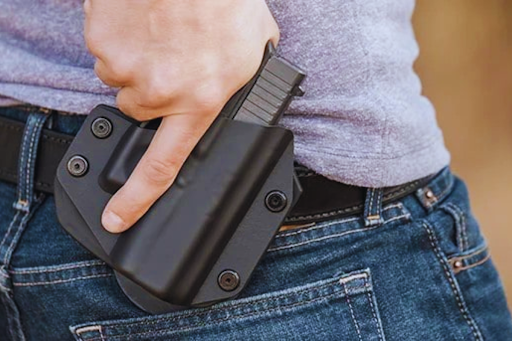When it comes to firearm accessories, your OWB (Outside the Waistband) holster is one of the most crucial components. It not only provides a secure and accessible way to carry your firearm but also plays a significant role in your overall safety and comfort. However, like any other piece of equipment, an OWB holster requires regular maintenance to ensure it remains functional and reliable. Proper care not only extends the life of your holster but also enhances its performance, making it a vital practice for anyone who uses OWB holsters for concealed carry or open carry. In this blog, we’ll delve into essential tips for maintaining your OWB holster to keep it in top shape.
Regular Cleaning
One of the simplest yet most effective ways to maintain your holster is through regular cleaning. Holsters are exposed to various elements, including sweat, dirt, dust, and even moisture. Over time, these can accumulate and cause wear and tear, affecting the holster’s performance and longevity.
How to Clean Your OWB Holster:
- Leather Holsters: Wipe down the exterior and interior of the holster with a damp cloth. Avoid soaking the leather, as excessive moisture can cause it to warp or lose its shape. To maintain the leather’s suppleness and protect it from drying out, add a conditioner after washing.
- Kydex and Polymer Holsters: These materials are more resistant to moisture but still require regular cleaning. Wipe down the OWB holster with a damp cloth, ensuring that you remove any dirt or debris that may have accumulated. For stubborn stains, use a mild soap solution, but be sure to rinse thoroughly and dry completely.
Regular cleaning not only helps in maintaining the aesthetics of your holster but also ensures that it functions smoothly, allowing for a quick and safe draw.
Inspect for Wear and Tear
Another crucial aspect of OWB concealed carry holster maintenance is regular inspection. Over time, holsters can develop signs of wear and tear, especially in high-stress areas like the retention screws, belt loops, and the area where the firearm makes contact with the holster. Inspect your holster regularly to identify any potential issues before they become a safety hazard.
Key Areas to Inspect:
- Retention Screws: Ensure that retention screws are tight and secure. Loose screws can compromise the holster’s ability to retain your firearm, leading to potential safety issues. If you notice any looseness, tighten the screws immediately. If the screws are stripped or damaged, replace them as necessary.
- Belt Loops/Clips: Check the integrity of the belt loops or clips. These are responsible for securing the holster to your belt, and any damage here can result in the holster shifting or even detaching during use. If you notice any cracks, breaks, or excessive wear, replace the loops or clips promptly.
- Holster Body: Inspect the body of the holster for cracks, warping, or excessive wear, particularly where the firearm comes into contact with the holster. Over time, repeated draws can cause wear, which may affect the holster’s ability to hold your firearm securely.
Regular Use
For those new to using OWB gun holsters, it’s essential to break in your holster properly. Regular use helps the holster conform to your firearm and your body, enhancing comfort and draw efficiency.
Breaking in Your OWB Holster:
- Leather Holsters: Leather holsters require a break-in period to soften your firearm. Regularly holstering and drawing your firearm will help speed up this process. You can also use leather-safe break-in sprays to soften the material, but be sure to follow the manufacturer’s instructions.
- Kydex and Polymer Holsters: While these materials don’t require a break-in period like leather, regular use is still essential. Practicing your draw will help the holster mold slightly to your firearm and ensure a smooth, efficient draw.
Conclusion
Maintaining your OWB holster is not just about extending its lifespan; it’s about ensuring it remains a reliable and safe part of your firearm setup. By incorporating regular cleaning, thorough inspections, proper storage, and consistent use into your maintenance routine, you can keep your holster in optimal condition for years to come.


